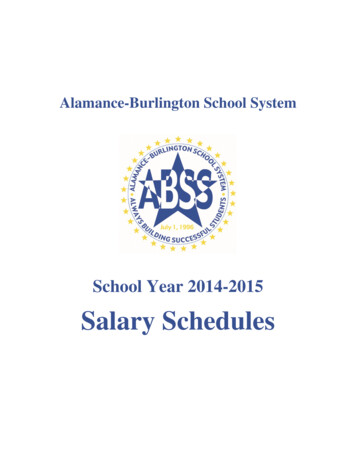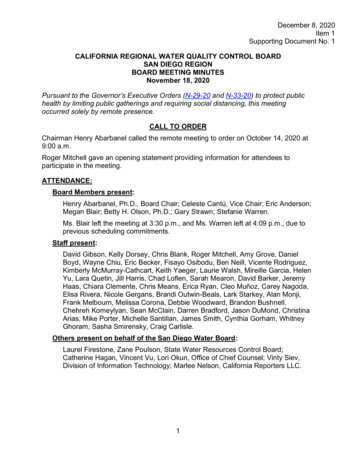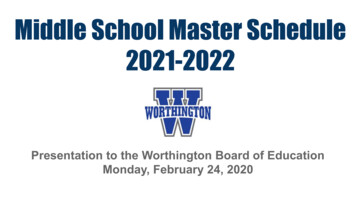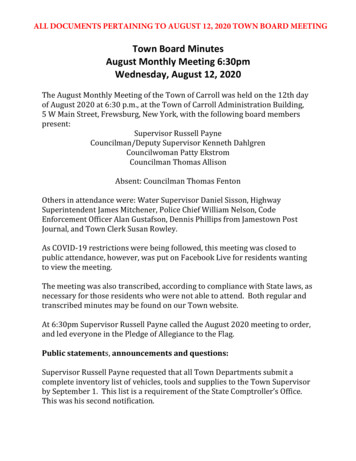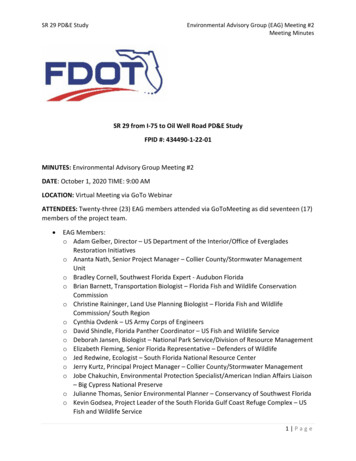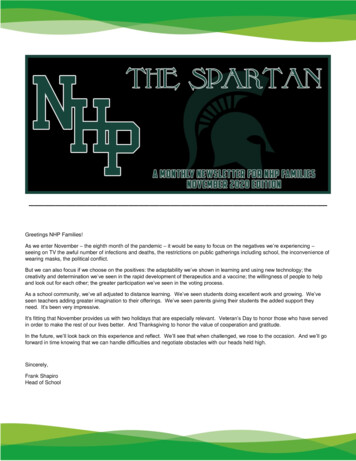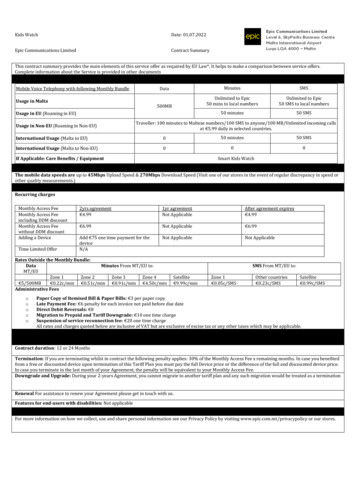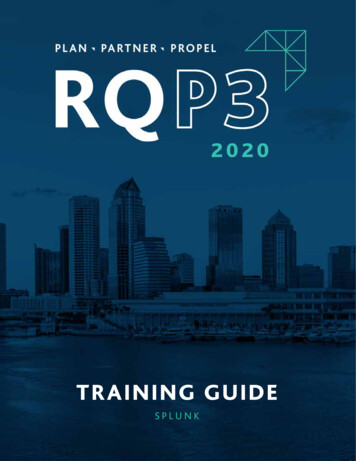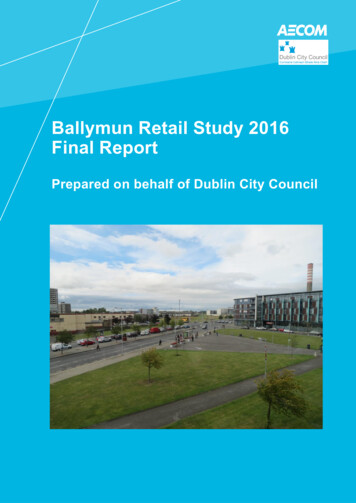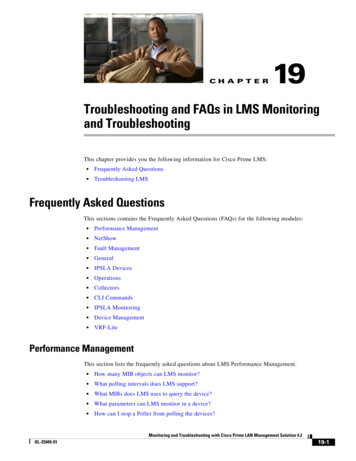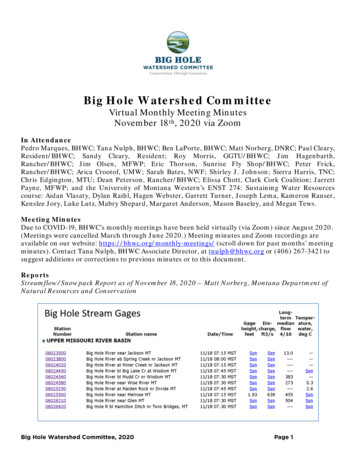
Transcription
Big Hole Watershed CommitteeVirtual Monthly Meeting MinutesNovember 18th, 2020 via ZoomIn AttendancePedro Marques, BHWC; Tana Nulph, BHWC; Ben LaPorte, BHWC; Matt Norberg, DNRC; Paul Cleary,Resident/BHWC; Sandy Cleary, Resident; Roy Morris, GGTU/BHWC; Jim Hagenbarth,Rancher/BHWC; Jim Olsen, MFWP; Eric Thorson, Sunrise Fly Shop/BHWC; Peter Frick,Rancher/BHWC; Arica Crootof, UMW; Sarah Bates, NWF; Shirley J. Johnson; Sierra Harris, TNC;Chris Edgington, MTU; Dean Peterson, Rancher/BHWC; Elissa Chott, Clark Cork Coalition; JarrettPayne, MFWP; and the University of Montana Western’s ENST 274: Sustaining Water Resourcescourse: Aidan Vlasaty, Dylan Raihl, Hagen Webster, Garrett Turner, Joseph Lema, Kameron Rauser,Kenslee Jory, Luke Lutz, Mabry Shepard, Margaret Anderson, Mason Baseley, and Megan Tews.Meeting MinutesDue to COVID-19, BHWC’s monthly meetings have been held virtually (via Zoom) since August 2020.(Meetings were cancelled March through June 2020.) Meeting minutes and Zoom recordings areavailable on our website: https://bhwc.org/monthly-meetings/ (scroll down for past months’ meetingminutes). Contact Tana Nulph, BHWC Associate Director, at tnulph@bhwc.org or (406) 267-3421 tosuggest additions or corrections to previous minutes or to this document.ReportsStreamflow/Snowpack Report as of November 18, 2020 – Matt Norberg, Montana Department ofNatural Resources and ConservationBig Hole Watershed Committee, 2020Page 1
Streamflows: Stream gages are now into seasonal status except for the Melrose gage. Thesegages will not be reporting discharge data again until April.Snowpack/Precipitation: While it is still very early, the higher elevations have received somesnow and we are off to a good start. Currently, snowpack for the Big Hole River based onrepresentative SNOTEL sites is 129% of average. Precipitation across the watershed iscurrently at 120% of average.Forecast: (from NOAA)o ENSO Alert System Status: La NiñaAdvisoryo Synopsis: La Niña is likely to continuethrough the Northern Hemisphere winter2020-21 ( 95% chance during JanuaryMarch) and into spring 2021 ( 65%chance during March- May). Conditionsstrengthened during October, as wellbelow-average sea surface temperatures(SSTs) extending from the Date Line tothe eastern Pacific Ocean were recorded.Big Hole Watershed Committee, 2020Page 2
o The 3-month outlook for November/December /January is for equal chances of averagetemperatures and 40% chance of above precipitation.Director’s Report – Pedro Marques, Executive Director Finances:o Strong finish to year end2020. Drought and Gages:o Drought committee meetingNov. 20th (Zoom). Securing Consistent & ReliableFunding:o BoR planning grant: UnderContract! 2-years capacity Watershed RestorationPlan Update; LowerRiver Engagement;Pennington BridgeDesigno Smelter Hills: Transition to Operation and Maintenance Phaseo Land Use Planning: 2021 Beaverhead County Floodplain map adoption; MadisonCounty- 2022 I-190 Marijuana Legalization legislation:o Appropriation of funds to be legislated this session: Grassroots groups and CDs for delivery of cost-effective conservation projects. Agricultural interests: Wildlife depredation/brucellosis expenses. Stream gages.Steering Committee – Jim Hagenbarth, Vice-Chairman and Roy Morris, Secretary Steering Committee is happy with the progress BHWC is making.Wildlife Report – Tana Nulph, Associate Director Loaner Toolkits: Livestock producers can borrow and/or test equipment.o Scare devices, temporary electric fencing,bear spray, resource guides, inert bearspray (practice), bear-resistantbackpacking containers, safetyequipment, bear-resistant garbage cans.o Contact Tana Nulph, BHWC AssociateDirector, for more information:tnulph@bhwc.org or (406) 267-3421. Heart of the Rockies Initiative received a grantfor nearly 1 million for wildlife conflictreduction:o Funding spread across 20 groups in 7states and 2 tribal nations. BHWC is one of those groups!Restoration Report – Ben LaPorte, Program Manager Grant Proposals and Future Projects!Big Hole Watershed Committee, 2020Page 3
1. Upper Oregon Creek Restoration: Revegetation and sediment catchment.2. 40 Bar Ranch Bank Stabilization: 3 banks- 1,260 feet total.3. Suenram “Phase 1”: Remove point bar to alleviate bank stress. Plant existing rip-rapped bank.4. Upper French Gulch Fish Passage: Restore upstream passage connectivity-1.7 miles.5. Bender Creek Restoration: 1 mile of new headwater tributary Mussigbrod Fire cattle grazing big spring VERY incised and degraded6. Anaconda Uplands (NRDP)7. Elkhorn Mine and MillNew Business Water Policy Interim Committee (WPIC) conducted a study, HJ40, on cloud seeding. Willsubmit a piece of Legislation in next Legislative session (2021). To be presented by SenatorGillespie to either the Natural Resources or Agriculture committee. Jim Hagenbarth urgedBHWC to support this legislation and offered to provide an educational presentation to thegroup to discuss cloud seeding. BHWC staff is working with Jim to schedule webinar.Meeting Topic: Working with Beavers in the Big Hole WatershedPresented by:Sarah Bates, National Wildlife Federation, andElissa Chott, Clark Fork CoalitionWorking with Beaver for Riparian Health – Sarah Bates, NWF Benefits of “getting in the way of water”:o Reconnect floodplaino Recharge groundwatero Mitigate for drought, lost snowpacko Increase habitat complexityo Inexpensive, effective restoration What is beaver restoration?o Relocating beavers into suitable habitato Restoring streams to facilitate natural recolonizationo Managing beavers to reduce conflictso Mimicking beavers through low-tech restoration methods (aka beaver dam analogs orBDAs) Montana Beaver Working Group:o Emerged from MT Wetlands Councilo In-person gatherings in 2014, 2017, 2020o Diverse, broad networko To sign up for the Montana Beaver Working Group, email Sarah at batess@nwf.org. Montana Beaver Working Group 2020 Strategic Action Plan priorities: Scale up beaver habitat restoration beyond isolated projects. Expand beaver distribution in public lands headwaters.Big Hole Watershed Committee, 2020Page 4
Provide outreach/education on benefits of beavers and methods for addressingnuisances. Remove legal/policy obstacles to beaver restoration.Key issues to address: Social acceptance: Nuisance mitigation Education about benefits Permitting and regulation Hydrologic impacts: Waters storage and flows Water quality, including temperature Biological Impacts: Fish passage and community composition Riparian habitat for other speciesBeaver Conflict Resolution Pilot Project – Elissa Chott, CFC Program partners:o Clark Fork Coalitiono Defenders of Wildlifeo National Wildlife Federation Why start a pilot project?o Conflicts with beaver barrier to restoration goals.o Variety of stakeholderso Developed pilot project to address concerns and find solutions. Goals:o Build more tolerance and understanding.o Reduce beaver conflicts viz nonlethal methods.o Help our partners reduce beaver-related conflicts. Beaver benefits:o Increased water retention and base flowso Decreased peak flowso Expansion of habitat area and complexityo Sediment retentiono Nutrient cyclingo Contaminate filtrationo Increased groundwater recharge Conflict types:1. Tree cutting2. Culvert plugging3. Free-standing dams Conflict solutions:1. Tree cutting: sturdy mesh fencing2. Culvert plugging: culvert exclusion fence3. Free-standing dams: pond leveler Activities for 2019:o Assessmento Identify demonstration siteso Develop cost-share program to incentivize participationo Educate and train partnersBig Hole Watershed Committee, 2020Page 5
Activities for 2020:o Identify conflict areaso Install demonstration projects and train partnerso Maintain structures from last yearo Outreach/training with partners and stakeholders2020 Conflicts and Projects:o 27 reported conflictso 6 projectso 13 more reported conflicts than first yearDesigning and Permitting:o Pond leveler and culvert fence designs are site specific: Our project helps with: Site assessment Device design (sturdy materials are a MUST!) Permitting Installation Cost-shareo Permits: 310 (private land) SPA 124 (public land/sponsored) Exceptions are irrigation ditches, no permit neededo MaintenanceTraining and Partner Organizations: Collaboration is key!o Partners: FWP: game wardens, biologist, park managers Big Hole Watershed Committee Blackfoot Challenge Five Valleys Land Trust MT Rail Link Anaconda Deer Lodge County Roads MDT Lewis and Clark County Roads Missoula County RoadsSummary:o Conflict resolution resources needed for restoration successo Solutions are site specifico Work with landowners to build tolerance and understanding: What are the landowner needs? Cost-sharingo Ultimately: coexistence to promote healthy watersheds.Questions? Ask:o Elissa Chott, Clark Fork Coalition: elissa@clarkfork.orgo Sarah Bates, National Wildlife Federation: batess@nwf.orgo Will McDowell, Clark Fork Coalition: will@clarkfork.orgo Aaron Hall, Defenders of Wildlife: ahall@defenders.orgUpcoming Meetings BHWC Virtual Monthly Meeting, February 17th, 2020 – 6pm via ZoomAdjournBig Hole Watershed Committee, 2020Page 6
Missouri Basin RegionLa Niña Impactsand OutlookOctober 2020Typical La Niña Winter PatternHighlights for the BasinA La Niña develops when sea surfacetemperatures in the eastern equatorialPacific are consistently cooler than averagefor an extended period of time. These coolwaters affect the location of jet streams,which causes impacts in North America. Themost notable impacts occur in the winter,when the wind patterns in the atmosphereare strongest.While no two La Niña events are alike,there are some general patterns that arepredictable. For instance, the polar jetstream is typically farther south than usualduring La Niña winters.The image above shows the typical pattern in the winter during La Niñaevents. The polar jet stream tends to traverse right through the MissouriBasin, making it the dividing line between cold and warm air masses. Thismeans that colder conditions could be in store for areas of the upper Basin,while the southern Plains could be warm and dry.Image courtesy of the National Oceanic and Atmospheric Administration.For the Missouri Basin states, the typicalwinter La Niña pattern leads to increasedchances for below-normal temperaturesacross the upper Basin. The northernRockies may also have increased chances foran above-normal snowpack.La Niña OutlookWinter Temperature and Precipitation OutlooksLa Niña ProbabilityValid for December 2020 - February 2021Winter 2020-2021TemperaturePrecipitationEC: Equal chances of above, near, or below normalA: Above normal, B: Below normalAs of mid-October, NOAA's Climate Prediction Center outlooks largelyfollow a typical La Niña pattern for the Missouri Basin states. Generally,the region has increased chances for cooler, wetter conditions acrossthe north, and warmer, drier conditions across the south. Normal tobelow-normal temperatures are favored in North Dakota and portions ofMontana, Wyoming, and South Dakota, while normal to above-normaltemperatures are favored across much of Colorado and Kansas, alongwith southern areas of Wyoming. Normal to below-normal precipitationis favored across southern areas of Colorado and Kansas, while normalto above-normal precipitation is favored across Montana, North Dakota,northern Wyoming, and much of South Dakota.Contact: Natalie Umphlett (numphlett2@unl.edu)Doug Kluck (doug.kluck@noaa.gov)La Niña conditions have continued this falland forecasts indicate that this La Niñawill strengthen, peaking as a moderateor even strong event in late fall or earlywinter. According to the Climate PredictionCenter, there is a greater than 85% chancethat these conditions will last through thewinter and about a 60% chance that LaNiña will continue into the early spring,as shown in the image above. A La NiñaAdvisory is currently in effect.Missouri Basin Region La Niña Impacts and Outlook October rts
Potential Winter and Spring ImpactsAgricultureMissouri RiverEconomyFall harvest in full swing, photo courtesyKen Dewey.The Platte River, a tributary of theMissouri River, photo courtesy Ken Dewey.Snowy scene in Colorado, photo courtesyBill Sorensen.La Niña conditions can haveworldwide impacts to the agriculturalsector. In the Missouri Basin,widespread drought conditions havehelped the fall harvest progressquickly. However, dry conditions couldbe an issue for winter wheat if timelyrains do not materialize. Potentialconcerns for the winter include theoverwintering of pests due to warmconditions in southern areas, andcalving/lambing issues due to coldconditions in northern areas.According to the U.S. Army Corps ofEngineers, after a near-record yearin 2019, the 2020 runoff forecast forthe upper Basin was 30.2 MAF, whichis just above average. Widespreaddrought conditions have impactedstreamflows and reservoir inflows incertain areas this summer and fall.Releases from Gavins Point will beadjusted upward, as needed, to helpmeet water intake and navigationneeds downstream. Conditions will bemonitored throughout the winter.Although losses occur regardless ofENSO phase, according to insurancedata, La Niña events tend to resultin the largest economic lossesworldwide. For the Missouri Basin,impacts could be mixed. For instance,northern areas expecting a cold andsnowy winter could have increasedcosts for heating and snow removal, inaddition to travel difficulties. However,an increased snowpack in thenorthern Rockies could be welcomedby ski resorts and outdoor enthusiasts.Comparisons and LimitationsMissouri Basin PartnersWinter Conditions During Past La Niña YearsMaps courtesy of the Midwestern Regional Climate CenterThe maps above show the winter conditions of the most recent La Niñaevent in 2017-18. Much of the Basin was cooler than average, and, althoughprecipitation varied, the highest amounts occurred from Montana throughcentral Nebraska. Because no two La Niña events are alike, it is importantto note that there are limits to the predictability of impacts this winter andother factors should be considered.While past La Niña events can help inform forecasters about certainconditions, there are limitations. For instance, in the Missouri Basin, La Niñais not known to impact: 1) first freeze in the fall, 2) last freeze in the spring, 3)potential for ice storms or blizzards, 4) track or intensity of any single weathersystem, or 5) potential for drought/flooding in the spring.Contact: Natalie Umphlett (numphlett2@unl.edu)Doug Kluck (doug.kluck@noaa.gov)High Plains Regional Climate Centerwww.hprcc.unl.eduNational Drought Mitigation Centerhttp://drought.unl.edu/National Oceanic and onal Integrated Drought InformationSystemhttps://www.drought.gov/NOAA NCEIwww.ncdc.noaa.govNOAA NWS- Central Regionwww.crh.noaa.gov/crhNOAA NWS Climate Prediction Centerwww.cpc.ncep.noaa.govNOAA NWS Missouri Basin River ForecastCenterwww.crh.noaa.gov/mbrfcAmerican Association of State Climatologistshttps://www.stateclimate.org/U.S. Army Corps of Engineerswww.usace.army.milUSDA Northern Plains Climate Hubwww.climatehubs.oce.usda.govMissouri Basin Region La Niña Impacts and Outlook October rts
Expand beaver distribution in public lands headwaters. Big Hole Watershed Committee, 2020 Page 5 . Missoula County Roads Summary: . o Aaron Hall, Defenders of Wildlife: ahall@defenders.org . Upcoming Meetings thBHWC Virtual Monthly Meeting, February 17 , 2020 - 6pm via Zoom . Adjourn .
